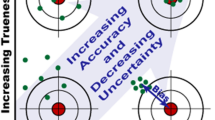Abstract
This research assesses the implications of existing trends on future network investment, comparing alternative scenarios concerning budgets and investment rules. The main scenarios compare “stated decision rules”, processes encoded in flowcharts and weights developed from official documents or by discussion with agency staff, with “revealed decision rules”, weights estimated statistically based on observed historical behavior. This research specifies the processes necessary to run the network forecasting models with various decision rules. We find that given the relatively small amount of funds available for network growth in a mature system, alternative decision rules make only small differences in overall system performance, though they direct investments to very different locations and affect the trip time and spatial accessibility in a significantly different way.










Similar content being viewed by others
Notes
The original transportation planning network provided by the Metropolitan Council comprises 20,380 links, 7,723 nodes, 1,165 transportation analysis zones (TAZs) in the seven-county Metro Area, and 35 external stations. The planning network was modified to accommodate potential but unbuilt links, in particular what we call legacy links (projects that are in old transportation plans from the 1960s but that have not yet been constructed). The general idea is that if a legacy link intersects an existing link, there is a creation of a new node and the old link is divided into two different links. In the revised network representation there are 20,398 links and 7,733 nodes.
References
Besley T, Coate S (2003) Centralized versus decentralized provision of local public roads: a political economy approach. J Public Econ 87:2611–2637
Bureau of Public Roads (1964) Traffic assignment manual. US Dept. of Commerce, Urban Planning Division, Washington, DC
Davis G, Sanderson K (2002) Building our way out of congestion? Highway capacity for the Twin Cities. Technical report, Mn/DOT 2002-01
de Dios Ortuzar J, Willumsen LG (2001) Modeling transport. Wiley, New York
Garrison WL, Marble DF (1962) The structure of transportation networks. Technical report, 62-II:73–88
Kansky K (1969) Structure of transportation networks: relationships between network geometry and regional characteristics. University of Chicago Press, Chicago
Knight B (2001) Endogenous federal grants and crowd-out of state government spending: theory and evidence from the federal highway aid program. Am Econ Rev 92(1):71–92
Levinson D, Karamalaputi R (2003a) Induced supply: a model of highway network expansion at the microscopic level. J Transp Econ Policy 37(3):297–318
Levinson D, Karamalaputi R (2003b) Predicting the construction of new highway links. J Transp Stat 6(2/3):81–89
Levinson D, Yerra B (2006) Self organization of surface transportation networks. Transp Sci 40(2):179–188
Levinson D, Montes de Oca N, Xie F (2006) Beyond business as usual: Ensuring the network we want is the network we get. Technical report, Mn/DOT 2006-36
Minnesota Department of Natural Resources (2003) Regionally significant ecological areas (RSEA) 2003 assessment results. Technical report, MDNR. http://www.dnr.state.mn.us/rsea/metro_assessment.html
Minnesota Department of Transportation (2001) Metro division transportation system plan. Technical report, MnDOT
Minnesota Department of Transportation (2005) 2002 freeway volume-crash summary. Technical report, Office of Traffic, Security and Operations. www.dot.state.mn.us/trafficeng/otepubl/CongestionReport-2004.pdf
Montes de Oca N (2006) Beyond business as usual: ensuring the network we want is the network we get. Master’s thesis, University of Minnesota
Montes de Oca N, Levinson D (2006) Network expansion decision-making in the Twin Cities. Transp Res Rec 1981 (Planning and Analysis 2006):1–11
Oates W (1972) Fiscal federalism. Harcourt Brace, New York
Sheffi Y (1985) Urban transportation networks: equilibrium analysis with mathematical programming methods. Prentice-Hall, Englewood Cliffs
Suwansirikul C, Friesz TL, Tobin R (1987) Equilibrium decomposed optimization: a heuristic for the continuous equilibrium network design problem. Transp Sci 21(4):261
Taaffe E, Morrill RL, Gould PR (1963) Transportation expansion in underdeveloped countries: a comparative analysis. Geogr Rev 53(4):503–529
Yang H, Bell MGH (1998) Models and algorithms for road network design: a review and some new developments. Transp Rev 18:257–278
Yerra B, Levinson D (2005) The emergence of hierarchy in transportation networks. Ann Reg Sci 39(3):541–553
Author information
Authors and Affiliations
Corresponding author
Additional information
This material is based in part upon work supported by the US National Science Foundation under Grant No. 0236396. This research was also supported by the Minnesota Department of Transportation research project “Beyond Business as Usual: Ensuring the Network We Want is the Network We Get”.
Rights and permissions
About this article
Cite this article
Levinson, D., Xie, F. & Oca, N.M. Forecasting and Evaluating Network Growth. Netw Spat Econ 12, 239–262 (2012). https://doi.org/10.1007/s11067-009-9113-z
Published:
Issue Date:
DOI: https://doi.org/10.1007/s11067-009-9113-z




